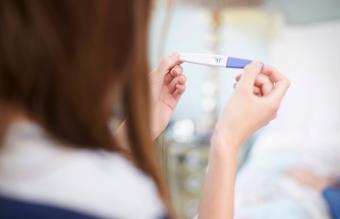
If you are experiencing possible pregnancy symptoms, it may be time to take a pregnancy test. If you are anxious about taking the test or have never taken a pregnancy test before, be reassured that it is a relatively easy process and the instructions included are clear and simple to follow.
When Is the Best Time to Take a Pregnancy Test?
The best time to take a pregnancy test is after you've missed your period. This is when it's the most accurate. A pregnancy test is actually 99 percent accurate when used correctly. It won't matter which brand of pregnancy test you use if you take the test after your period is late. The majority of the tests will be very accurate in that timeframe and will reflect the same result.
Tips for Taking a Pregnancy Test
Keep in mind that each pregnancy test is a little different, therefore, it is very important that you thoroughly read the instructions that are in the box first. Some general information and basic instructions about pregnancy tests are as follows:
Basic Information
Before you purchase your first pregnancy test, you should know that:
- Pregnancy tests can be found at drug stores, grocery stores or purchased online.
- The prices vary and will range from $10 to $20. (Some may be more expensive.)
- Always check the expiration date.
- Most pregnancy tests contain two per box which is useful if you think you did the first one incorrectly or you want to double check results.
- The pregnancy test itself will look like a flat, plastic stick about an inch in width, a half inch thick and the length is a little shorter than a pen.
Taking the Test
Many women get nervous before they take the actual test. Just a few tips can help make your test go smoothly.
- It is best to use your first morning urine, this will help provide a more accurate result. Taking the test later in the day or after drinking a good amount of water can dilute the urine and could affect the accuracy of the test.
- You will need to refer to your instructions to see which end of the stick to urinate on and how long you should hold it in your urine stream. Typically, counting out five to ten seconds is sufficient.
- Your instructions will also indicate how long to wait before checking for results.
- Lay the stick flat while waiting.
- If you are concerned that your urine may have missed the stick due to nerves, shaky hands or simply bad timing, you should probably take another pregnancy test. Your urine must make contact with the absorbent strip in order to get results.
- Other options you can try is urinating in a collection cup (which may be included with your pregnancy test) and dip the absorbent strip into the cup or take an eyedropper and place the urine directly on the strip.
Interpreting the Results
Do not look at the results window too soon. Instead, wait the appropriate amount of time for accurate results. Depending on the test you use, if your results even produce a faint line, this indicates that you're pregnant. While a negative result could indicate you're not pregnant, keep in mind it could also mean you took the pregnancy test too early. It is always best to double check with your healthcare provider.
How Do Pregnancy Tests Work?
The home pregnancy test works by detecting the presence of the hormone, human chorionic gonadotropin or hCG, in your urine. Your body produces the hCG hormone only when you are pregnant (after the fertilized egg implants within the uterus).
Two Variations of Pregnancy Tests on the Market
There are two variations of pregnancy tests available, digital and non-digital. While they basically work the same way by detecting the hCG hormone to determine pregnancy, there are a few differences as well, which include:
Digital Pregnancy Tests
Digital pregnancy tests are more sensitive and can detect the hCG hormone earlier than the non-digital pregnancy tests. With the digital test you can read your results. It will say "pregnant" or "not pregnant". However, they are more expensive than the non-digital pregnancy tests.
Non-Digital Pregnancy Tests
Non-digital pregnancy tests will only detect the hCG hormone when the levels get high enough, so pregnancy will be determined later than digital tests. The results of a non-digital test will read as lines or plus signs (depending on the test purchased) and may be confusing for some. However, if you are on a budget, the non-digital tests will run cheaper than the digital.
You May Need Some Support
If you are anxious or nervous about taking a pregnancy test, you may want to confide in a family member or friend. Their support and guidance can help give you reassurance and comfort as you wait for your results.







